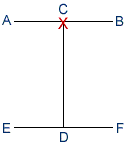
Courtesy | Integrity | Perseverance | Self-Control | Indomitable Spirit
Ye Ui Yom Chi In Nae Guk Gi Baekjul Boolgool
예 의 염 치 인 내 극 기 백 절 불 굴
SG Taekwon-Do School
International Taekwon-Do Federation
Grandmaster General Choi Hong Hi 1918 - 2002
Colour Belt Pattern Daigrams
The name of the pattern, the number of movements, and the diagrammatic symbol of each pattern symbolizes either heroic figures in Korean history or instances relating to historical events.

-
Gup: 10th White
-
Pattern Name: SAJU-JIRUGI
(FOUR DIRECTION PUNCH)
-
Steps: 14
-
Ready Posture: Parallel Ready Stance
White belt fundemental movement

-
Gup: 10th White
-
Pattern Name: SAJU-MAKI
(FOUR DIRECTION BLOCK)
-
Steps: 16
-
Ready Posture: Parallel Ready Stance
White belt fundement movement

-
Gup: 9th White/Yellow
-
Pattern Name: CHON-JI
-
Steps: 19
-
Ready Posture: Parallel Ready Stance
CHON- JI means literally "the Heaven the Earth". It is, in the Orient, interpreted as the creation of the world or the beginning of human history, therefore, it is the initial pattern played by the beginner. This pattern consists of two similar parts; one to represent the Heaven and the other the Earth.

-
Gup: 8th Yellow
-
Pattern Name: DAN-GUN
-
Steps: 21
-
Ready Posture: Parallel Ready Stance
DAN-GUN is named after the holy Dan-Gun, the legendary founder of Korea in the year of 2,333 B.C.

-
Gup: 7th Yellow/Green
-
Pattern Name: DO-SAN
-
Steps: 24
-
Ready Posture: Parallel Ready Stance
DO-SAN is the pseudonym of the patriot Ahn Chang-Ho (1878-1938) The 24 movements represent his entire life which he devoted to furthering the education of Korea and its independence movement.

-
Gup: 6th Green
-
Patter Name: WOH-HYO
-
Steps: 28
-
Ready Posture: Close Ready Stance A
WON-HYO was the noted monk who introduced Buddhism to the Silla Dynasty in the year of 686 A.D.

-
Gup: 5th Green/Blue
-
Pattern Name: YUL-GOK
-
Steps: 38
-
Ready Posture: Parallel Ready Stance
YUL-GOK is the pseudonym of a great philosopher and scholar Yi l (1536-1584) nicknamed the "Confucius of Korea" The 38 movements of this pattern refer to his birthplace on 38 latitude and the diagram represents "scholar".

-
Gup: 3rd Blue/Red
-
Pattern Name: TOI-GYE
-
Steps: 37
-
Ready Posture: Close Ready Stance B
TOI-GYE is the pen name of the noted scholar Yi Hwang (16th century), an authority on neo Confucianism. The 37 movements of the pattern refer to his birthplace on 37 latitude, the diagram represents " scholar".

-
Gup: 4th Blue
-
Pattern Name: JOONG-GUN
-
Steps: 32
-
Ready Posture: Close Ready Stance B
JOONG-GUN is named after the patriot Ahn Joong-Gun who assassinated Hiro-Bumi Ito, the first Japanese governor-general of Korea, known as the man who played the leading part in the Korea-Japan merger. There are 32 movements in this pattern to represent Mr. Ahn's age when he was executed in a Lui-Shung prison (1910).

-
Gup: 2nd Red
-
Pattern Name: HWA-RANG
-
Steps: 29
-
Ready Posture: Close Ready Stance C
HWA-RANG is named after the Hwa-Rang youth group, which originated in the Silla Dynasty in the early 7th century. The 29 movements refer to the 29th Infantry Division, where Taekwon-Do developed into maturity.

-
Gup: 1st Red/Black
-
Pattern Name: CHOONG-MOO
-
Steps: 30
-
Ready Posture: Parallel Ready Stance
CHOONG-MOO was the name given to the great Admiral Yi Soon-Sin of the Lee Dynasty. He was reputed to have invented the first armoured battleship (Kobukson) in 1592, which is said to be the precursor of the present day submarine. The reason why this pattern ends with a left hand attack is to symbolize his regrettable death, having no chance to show his unrestrained potentiality checked by the forced reservation of his loyalty to the king.
